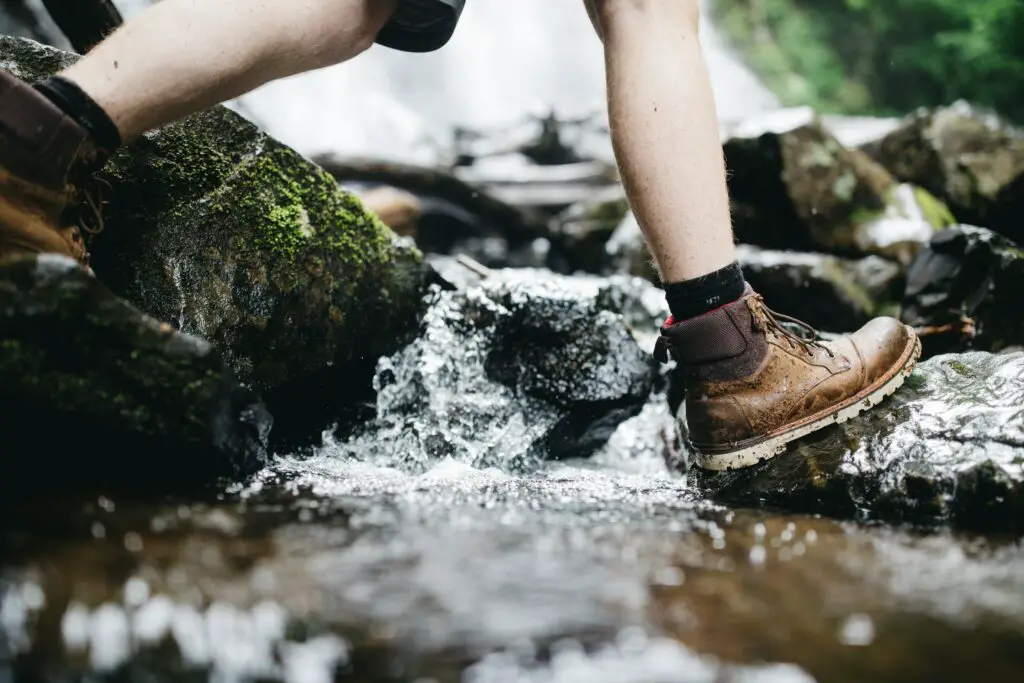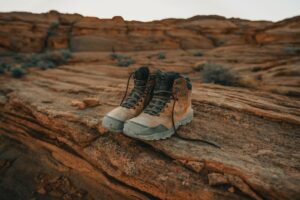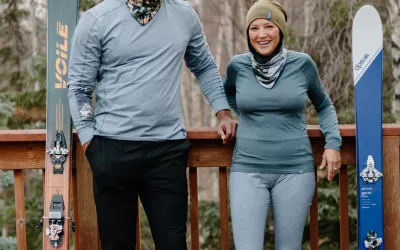The Wear and Tear of Hiking Boots: When It’s Time for a New Pair

Hiking is an popular way to explore outdoor spaces and it can be an important part of your outdoor self-care routine. While hiking doesn’t require a lot of equipment to get started, a solid pair of hiking boots can go a long way in making your hiking experiences more enjoyable. Hiking boots are designed to take a lot of punishment out on the trail. So how do you know when to replace hiking boots?
Hiking boots are a critical piece of gear for anyone who enjoys spending time in the great outdoors. They protect your feet from rough terrain, provide stability and support, and can even prevent injuries. However, even the most durable hiking boots will eventually wear out over time.
Knowing when it’s time to replace your hiking boots is crucial for maintaining their effectiveness and keeping your feet safe and comfortable on the trail. In this article, we’ll discuss the signs of wear and tear to look out for, and provide tips for determining when it’s time for a new pair.
But before we dive into the details, let’s take a moment to appreciate the importance of hiking boots in general. Whether you’re embarking on a short day hike or a multi-day backpacking trip, the right footwear can make all the difference in your experience. So, whether you’re a seasoned hiker or new to the game, read on to learn more about when it’s time to replace your trusty hiking boots.
The Signs of Wear and Tear
Hiking boots are subjected to a lot of wear and tear during their lifespan, so it’s important to know what to look for when assessing whether it’s time for a replacement. Here are some signs that your hiking boots may be nearing the end of their useful life:
Visible damage to the sole, upper, or lining
- Check the soles of your boots for wear, such as smooth spots or holes, which can compromise traction and support.
- Look for tears or holes in the upper material, which can allow water and debris to enter the boot.
- Check the lining of the boots for holes or signs of wear, as this can cause discomfort and blisters.

Loss of support or cushioning
- Over time, the cushioning in your boots may break down, causing your feet to feel less supported and comfortable.
- If you notice your boots feel less springy or squishy underfoot, it may be time for a new pair.
Changes in the fit or comfort level
- As boots age, they may lose their shape or stretch out, causing your feet to slide around inside.
- If you notice your boots feel looser or tighter than they used to, or that you’re developing blisters or hot spots, it may be time for a new pair.
Unusual noises or sensations when walking
- Listen for unusual noises, such as squeaking or creaking, which can indicate that the boots are breaking down.
- Pay attention to any unusual sensations, such as slipping or sliding, as this can also indicate that the boots are no longer providing the necessary support and traction.
By paying attention to these signs of wear and tear, you can determine whether it’s time to retire your old hiking boots and invest in a new pair that will keep your feet safe, comfortable, and supported on your next hiking adventure.
Determining When to Replace Your Hiking Boots
Now that you know what signs of wear and tear to look for, it’s time to consider a few other factors to help determine when it’s time to replace your hiking boots.
The type and frequency of use
- If you’re an occasional hiker who only hits the trails a few times a year, your boots may last longer than if you’re a frequent hiker who spends several days a month on the trail.
- Additionally, if you primarily hike on well-groomed trails versus rocky or rugged terrain, your boots may last longer as well.
The age of the boots
- Even if your boots still look and feel fine, if they’re several years old, it may be time to consider replacing them.
- As a general rule of thumb, hiking boots should be replaced every 500 miles or so, depending on the conditions in which they were used.
The severity of the wear and tear
- If you notice any of the signs of wear and tear mentioned earlier, it may be time to replace your boots regardless of their age.
- Additionally, if you’ve experienced any foot or ankle injuries while hiking, it’s important to ensure that your boots are providing the support and stability you need.
Personal comfort and preference
- At the end of the day, it’s up to you to decide when to replace your hiking boots based on your own comfort and preference.
- If you find that your boots are no longer comfortable or supportive, it’s time to start shopping for a new pair.
By considering these factors, you can make an informed decision about when to replace your hiking boots, ensuring that you’re always equipped with the best gear for your hiking adventures.
Are your hiking boots a bit tired but not yet worthy of replacement? You may consider repairing them yourself.
Tips for Extending the Life of Your Hiking Boots

Replacing your hiking boots can be a significant investment, so it’s important to take good care of them to ensure they last as long as possible. Here are some tips for extending the life of your hiking boots:
Clean and dry your boots after each use
- After a hike, remove any dirt or debris from your boots using a soft brush or cloth.
- Allow your boots to air dry thoroughly before storing them, as leaving them damp can cause mold and mildew to develop.
Store your boots properly
- Avoid storing your boots in a damp or humid area, as this can cause the materials to break down more quickly.
- Store your boots in a cool, dry place and avoid stacking heavy items on top of them.
Treat your boots with care
- Avoid kicking or scraping your boots against rocks or other hard surfaces, as this can cause damage to the sole or upper.
- Use caution when tightening or adjusting laces, as overtightening can cause undue stress on the upper material.
Get your boots professionally cleaned and resoled
- If your boots are showing signs of wear and tear, consider taking them to a professional for cleaning and resoling.
- This can extend the life of your boots and save you money in the long run.
By taking good care of your hiking boots, you can extend their lifespan and ensure that you get the most out of your investment. Remember to inspect your boots regularly and replace them when necessary to ensure that you’re always equipped with the best gear for your next adventure.
The Bottom Line
Hiking boots are a crucial piece of gear for any hiker, providing support, stability, and protection on the trail. However, like any piece of gear, hiking boots will eventually wear out and need to be replaced. By knowing the signs of wear and tear to look for and considering factors such as frequency of use and age of the boots, you can make an informed decision about when to replace your hiking boots.
In addition, taking good care of your hiking boots by cleaning and storing them properly, treating them with care, and getting them professionally cleaned and resoled can help extend their lifespan and save you money in the long run.
Remember, your hiking boots are an investment in your hiking experience, and it’s important to ensure that you have the best gear for the trail. By following these tips and guidelines, you can ensure that you’re always equipped with the best hiking boots for your adventures.
Looking for some new hiking boots? Here are 3 of of the best sellers on Amazon:













Leave a Reply